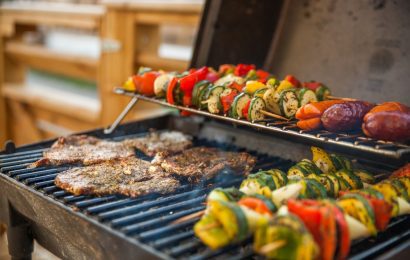Anyone who has ever visited the famous cities or scenic countryside of Italy would probably agree that there is scarcely a bad meal to be found in almost the entire country. What makes Italian cooking so tasty? Whether you ask a mother cooking for her family or a chef employed at a prestigious restaurant in Rome or Venice, the answer will likely be the same – freschezza, or “freshness.” What this really means is that Italian cooking is seasonal cooking: The foods that are currently growing locally are what wind up on the dinner table in most Italian homes.
Although here in America, Italian cooking is often associated with pizza and pasta, this nation’s cuisine is about more than just spaghetti and meatballs. Italian cooking often includes various types of fresh produce, cheese, beans, poultry, nuts, meats, and grains. Often, recipes are handed down from generation to generation or shared among friends. Some very well respected chefs will even admit that their most popular dishes are exact copies of meals made by their mother, grandmother, or next-door neighbor.
During a recent trip to the northeastern Italian region of Friuli, I had the pleasure of both cooking in the kitchen of an old friend, as we have done many times in the past, and spending an afternoon deep in culinary conversation with a professional chef from a prominent local vineyard. The following recipes, featuring barley, are theirs.
Why barley? Barley, or orzo in Italian, is one of the oldest cultivated grains in the human diet, dating back to the Stone Age. It is a hearty food that can leave a person feeling satisfied and energized for hours without wreaking havoc on his blood glucose level. Indeed, barley has a low glycemic index (GI) value, making it an excellent choice for blood glucose management. (The glycemic index ranks carbohydrate-containing foods on a scale from 0 to 100 based on how they affect blood glucose levels.) In fact, with a GI of 25, pearled barley (barley that has had its hull and bran layers removed) is lower on the glycemic index than many other foods.
Moreover, barley is a very good source of fiber, which can be useful for improving bowel regularity. And, in particular, this grain is high in soluble fiber, or the kind of fiber that transforms into a sticky, gel-like mass during digestion. Because of this, barley’s movement through the digestive system is slowed, meaning that the rate at which it is broken down into glucose and released into the bloodstream is slowed as well.
In addition to its usefulness in helping improve regularity and blood glucose control, barley is also a nutrition heavyweight for other reasons. Namely, it contains significant amounts of several of the B vitamins, as well as vitamin A, iron, calcium, potassium, and phosphorus, all of which are needed for critical bodily functions. Not to mention that barley is virtually fat free.
My friend in Friuli was delighted to hear about barley’s nutritional and glycemic attributes. She has been controlling her Type 2 diabetes with her diet for the past seven years and, as a frequent traveler, finds that getting healthy food in unfamiliar locations can be a real challenge. But barley, she tells me, is commonly found in several of the regional cuisines of Africa, southeastern Asia, and China. It is also frequently prepared as part of a vegetarian dish in many places. In Italy, barley is sometimes used in vegetable soups and as a primo piatto, or first course, in place of pasta or rice.
As might be expected, the chef I spoke to was less impressed with the nutritional benefits of barley. Instead, he praised its luxurious, creamy texture and its adaptability in different dishes. He also praised its earthy, nutty flavor, which matches up so well with a variety of vegetables, such as mushrooms. He explained that barley is a local favorite because the climate in this part of Italy is often cool with long periods of rain: Barley dishes warm his customers up and keep them feeling full until their next meal. He also noted that this region of Italy is filled with woods and low mountains where a variety of prized mushrooms such as porcini and chanterelles can be found – in season, of course!
Although their backgrounds and culinary experiences are quite different, my good friend and the chef both stick to the same cooking principles: Use only fresh ingredients; allow enough time for proper cooking; cook with attention, passion, and respect for the food; and present your food with pride. I can attest from firsthand experience that the recipes that follow, all of them developed by these two talented people, are wonderful when these rules are followed.
So how about trying some barley recipes out for yourself? I did. I bought the freshest ingredients I could find, then stirred, sniffed, and tasted each dish as it bubbled on the stove. And, singing a bit of the Italian tunes I have learned over the years, I let the sounds and scents of Italy fill my kitchen.
Vanda’s minestrone with barley and lentils




